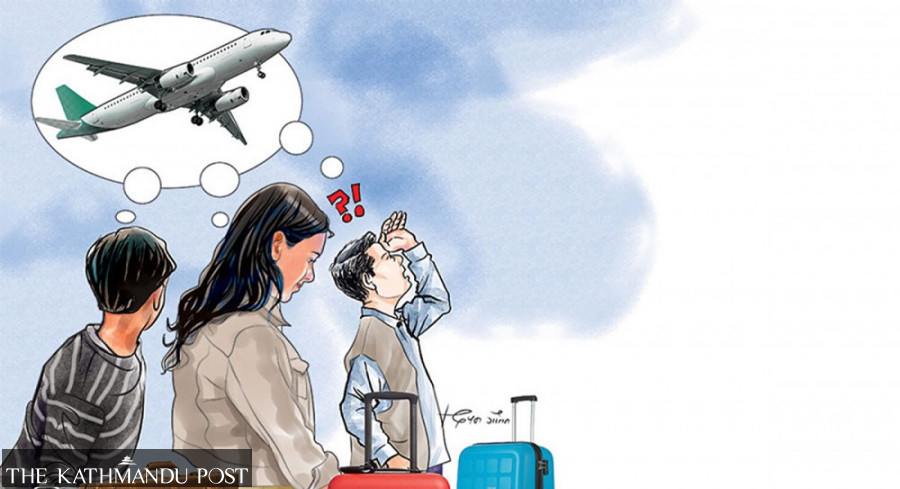Editorial
Think before you leave
Many Nepalis studying abroad are struggling just to survive. The government must step in.
Earlier this year, the news of Nepali students facing financial hardships in Canada made headlines, as they were stranded without food and housing as living expenses shot up. With Canada making its visa policies flexible, especially in the post-pandemic period, it became a favourite destination for students desperate to leave their homes. Educational consultancies contributed by convincing the students to apply to Canadian universities, alluring them with easier options for obtaining permanent residency. However, when the Nepali students reached Canada, they faced a different reality: The living costs were high, and there were no jobs for them.
This was not the problem of Nepali students alone—thousands of international students, including large numbers from India, faced basic survival problems. For the past couple of years, there has been an exodus of Nepali students to Canada. According to some reports, while 6,200 Nepali students got study permits for Canada in 2022, the number stood at 8,600 in the first six months of 2023. Between 2015 and 2020, the number of international students admitted to Canadian colleges grew by 154 percent. International students often pay thrice what domestic students do to study in Canadian colleges. International student admissions, therefore, form the backbone of earnings for those colleges. However, the high tuition fees cause a survival problem for international students. There are over a million of them in Canada, and this has caused significant logistical problems. Students were seen living on the streets or in cramped rooms.
The desperate living conditions of international students forced the Canadian government to devise several measures to solve the crisis. Canada in January this year announced a two-year cap on international student admissions. In December last year, it announced that the minimum financial requirement for student permits for international applicants had been increased from $10,000 to $20,635. International students already in Canada or those who had submitted their applications by December 7, 2023 could work more than 20 hours a week until April 30 this year to help them get by. However, the government does not seem too interested in extending this deadline as it is worried that more and more international students would spend time at work rather than focus on their studies.
The problem of Nepali students being stranded in Canada arose partly because the Nepal Government failed to take guardianship of its citizens. Lack of opportunities in the country has forced Nepalis to think of shifting abroad permanently. While individuals cannot be faulted for trying to take up opportunities they find more suitable, the government has a responsibility to make a basic assessment of whether its citizens stand a chance to survive in the new place.
The Nepal government’s only interest seems to be to distribute a “No Objection Certificate” to Nepalis seeking to study abroad, without considering whether they have any solid plans for paying their tuition fees. Moreover, as Canadian federal and provincial officers have said, the international students were preyed upon by “bad actors”—educational consultancies selling the students false dreams of prosperity. Nepali students will continue to be cheated unless the government comes up with sensitisation campaigns about the good, bad and ugly of international education. The Canada imbroglio should be a lesson for the Nepal government and the students alike about making informed choices when it comes to seeking education abroad.




 10.12°C Kathmandu
10.12°C Kathmandu














